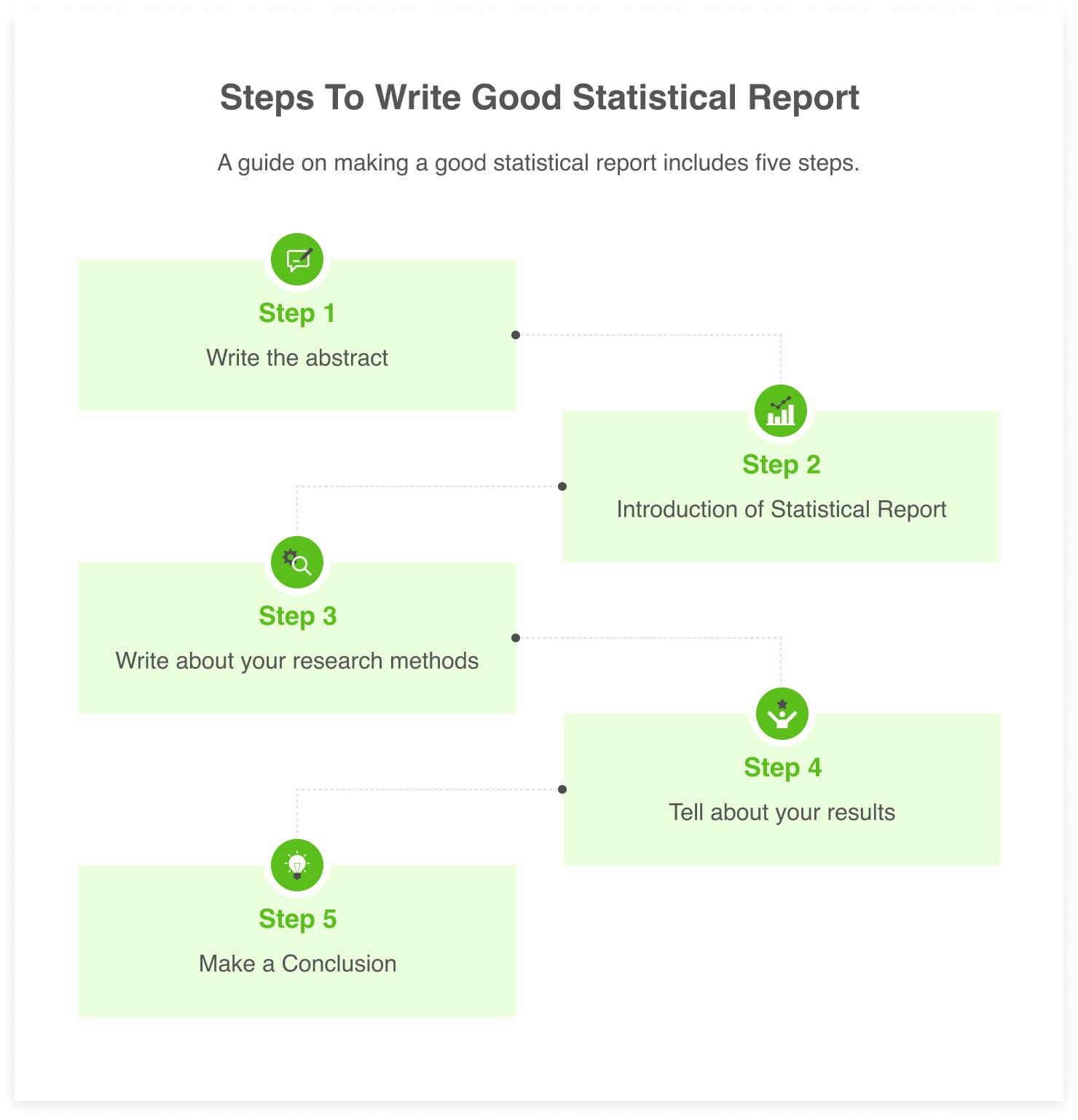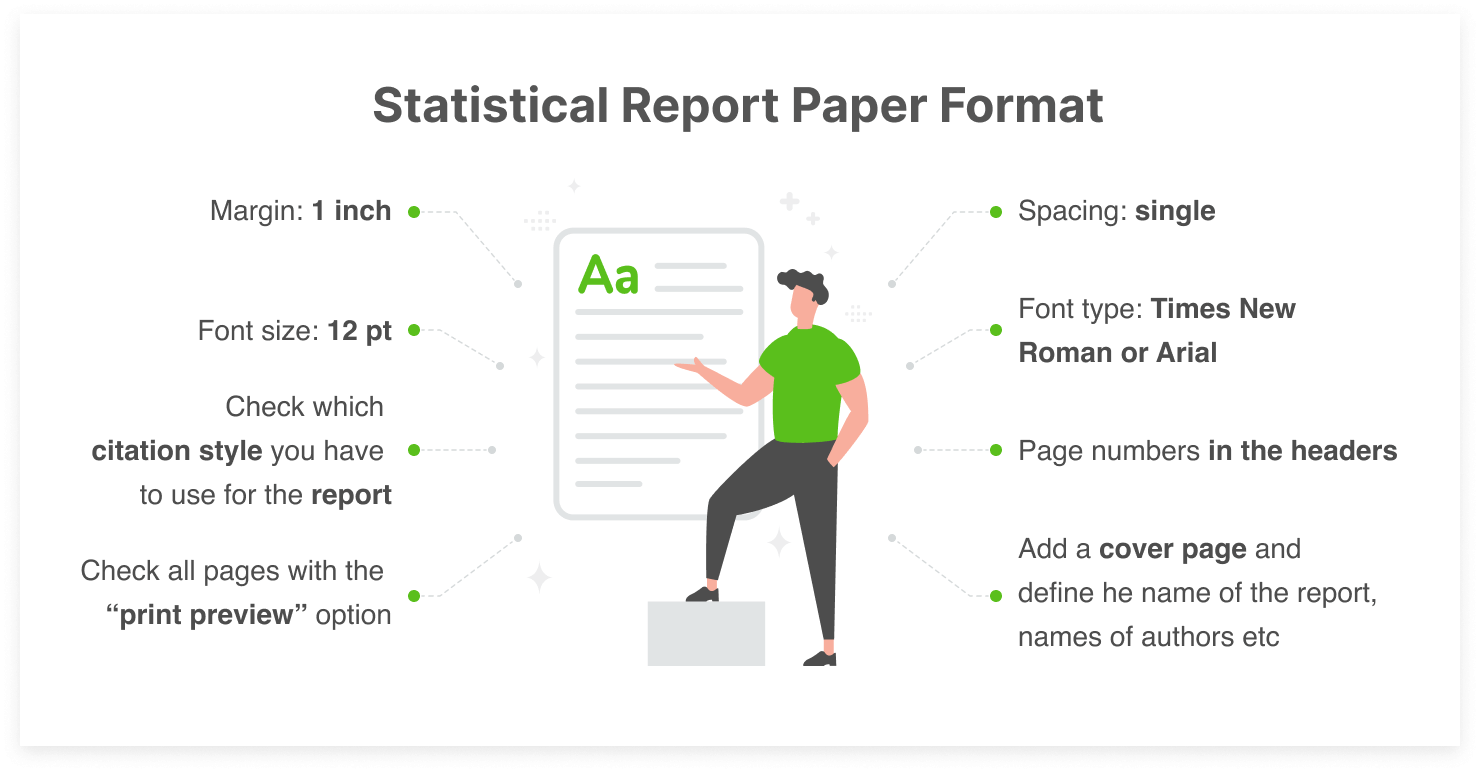How to Write Statistical Report: Step by Step Guide

The statistical report is a way of presenting large amounts of data in a convenient form. It makes them appropriate for both the non-experienced audience and for professionals.
Teachers often give their students a task to do a statistical analysis report during the course on this subject. It is not an easy task. You need statistical analysis skills, learn methods and tools. You need to researching skills to gather information from reliable sources. And you need to possess the skills of writing to make the report readable.
Many students have issues while performing this task, that’s why we want to help. In this article you can find the information on the procedure, the contents and structure of this work and very useful tips on how to write a statistics report worth excellent grades.
with Our Writing Service

ESSAYS

TERM PAPERS

RESEARCH PAPERS

THESIS PAPERS

BOOK REPORTS
How to Start a Statistical Report?
The first thing you need is a good statistics reports example. If your tutor did not provide you with such samples, refer to the libraries or search for the data online.
Choose an example of the statistical report or analysis which belongs to the same field that of study you work with. Different subjects imply their requirements for work and formatting. Using them as templates will be a mistake if you work on a different topic.

Statistical Report Format
The main requirements for the statistics report format are simple: your report must be plain and neat.
- Margin: 1 inch. If you want to print that report and put it into a folder, you can set the 1,5-inch left margin. The document will look neatly.
- Spacing: single;
- Font size: 12 pt;
- Font type: Times New Roman or Arial;
- Page numbers must be present in the headers.
- Check which citation style you have to use for the report. Make sure to format the citations in that style.
- Add a cover page and define the name of the report, names of authors and co-authors and the date. If your report is large, include the table of contents.
- Check all pages with the “print preview” option for the margins around the visual elements and the page layout.

5 Main Steps to Write Good Statistical Report
The statistical report has its peculiarities. Its structure differs from the structure of the other types of writing work. It has common features like “Introduction” and “Conclusion” parts, though.
Your main task is to present the data you obtained via own researches and explain your results and which means of statistical analysis you used.
A guide on making a good statistical report includes five steps.
Step1: Write the abstract
The Abstract is the text preface put before the standard Introduction, and you need to gain the attention of your target audience with it.
- Define the key points of the report and its goals;
- Define the structure of the work, its parts and briefly explain the goals of each part;
- Name the main findings;
- Sum up your conclusions;
- Give a brief description of the research methods you used;
- Size – up to 200 words.
Step2: Introduction of Statistical Report
In the Introduction, you should explain why you took this topic. If you wanted to answer some questions or prove some hypothesis, mention this. Also, give a summary of the experiments which you performed.
How to write the Statistical Report Introduction correctly: 3 main rules
- Name the goal of the research. For example, fill some gap in the data, resolve a problem, disprove some statement, or else. Mention the importance of your work in this context.
- Give a brief overview of the most important results.
- Don’t overload your text with terms and numbers in the Introduction.
Step3: Write about your research methods
In this part you shouldn’t explain the essence of the standard statistical analysis methods, your audience has to know them by default. Instead, describe your experiments, their aims and how you compiled the data.
Mark if the task itself remained constant all the time, or you had to adapt the goals to the new conditions.
List the resources and applications you used. However, if you only worked with printed media, it is enough to list them in the bibliography.
Step4: Tell about your results
It is the largest and the “driest” part of the report.
- Present facts only, don’t draw any analysis or discussions;
- Start from the general concepts and move to particular details;
- Don’t mention any irrelevant results, unless you discovered something new and unexpected;
- Use terms and strict definitions, in this part you shouldn’t use colloquial style;
- Pay attention to the page layout – use smaller paragraphs.
- Illustrate each result with a table, graph or a diagram.
Step5: Conclusion
Here you give a summary of your results and explain their meaning in the context of your field of study. Also, you should mention if you approved or disproved your initial hypothesis.
Note that you should use plain language in Conclusion. This part, together with the Introduction and the Abstract, should be written in the general style without hard terminology.
If you find out in the process of the researches that subject has to be explored more, note this too. Outline which methods you would use for that and which results you expect to get.
Statistical Report Examples
So, you need the facts and results of your researches. If you explore the subject thoroughly and enthusiastically, you will certainly master the analysis methods. And the above recommendations on how to create a statistical report will help you with the structure and the contents of the work.
However, if you have samples of the ready reports – examine them in detail. Here, at 5homework.com, you can familiarize yourself with them to use in your work.

 +1 888 957 5888
+1 888 957 5888

